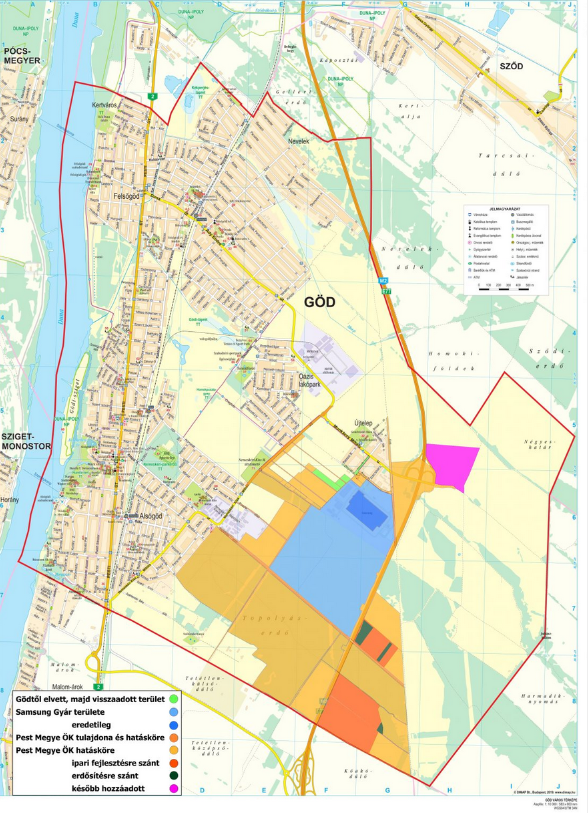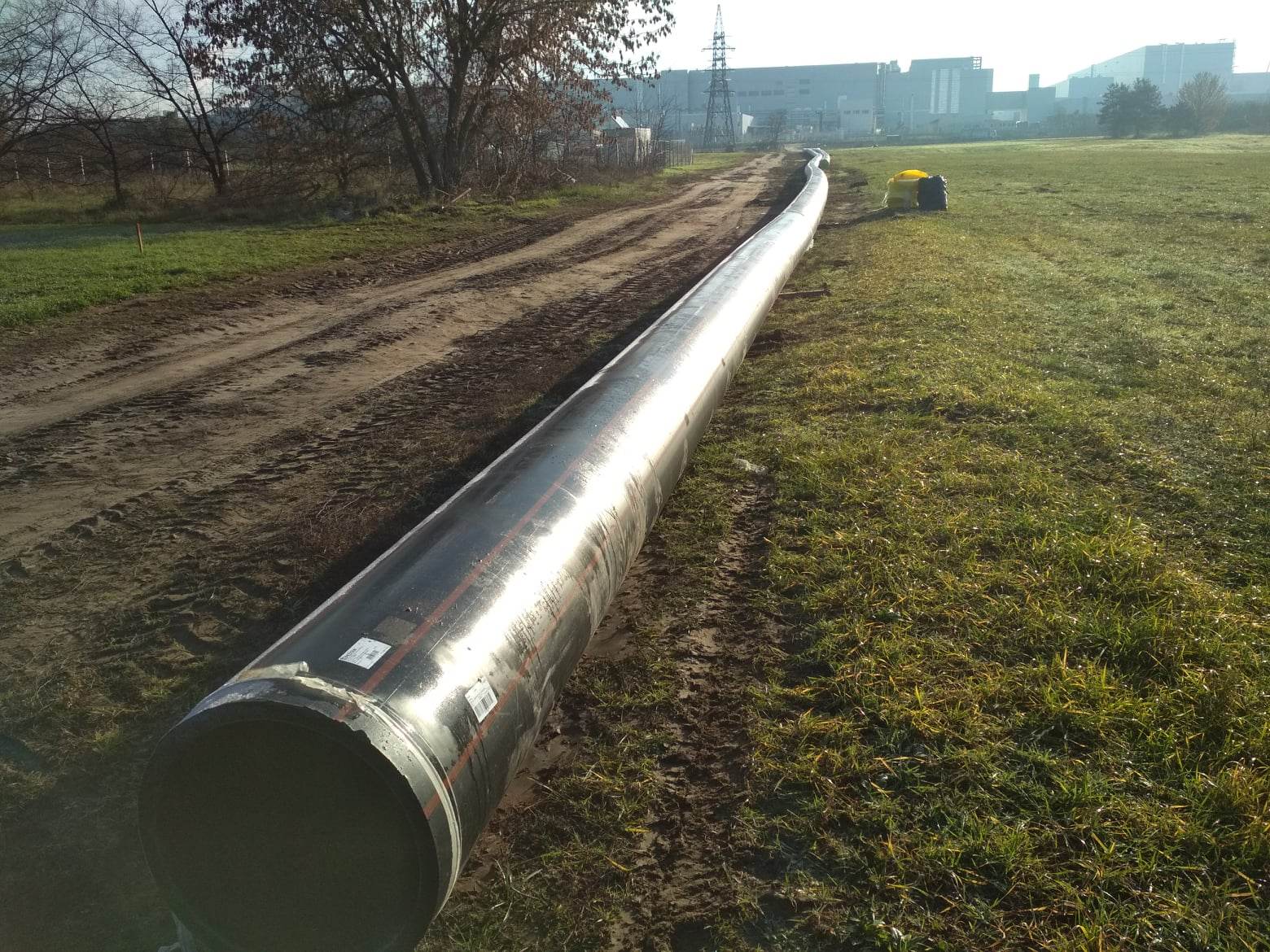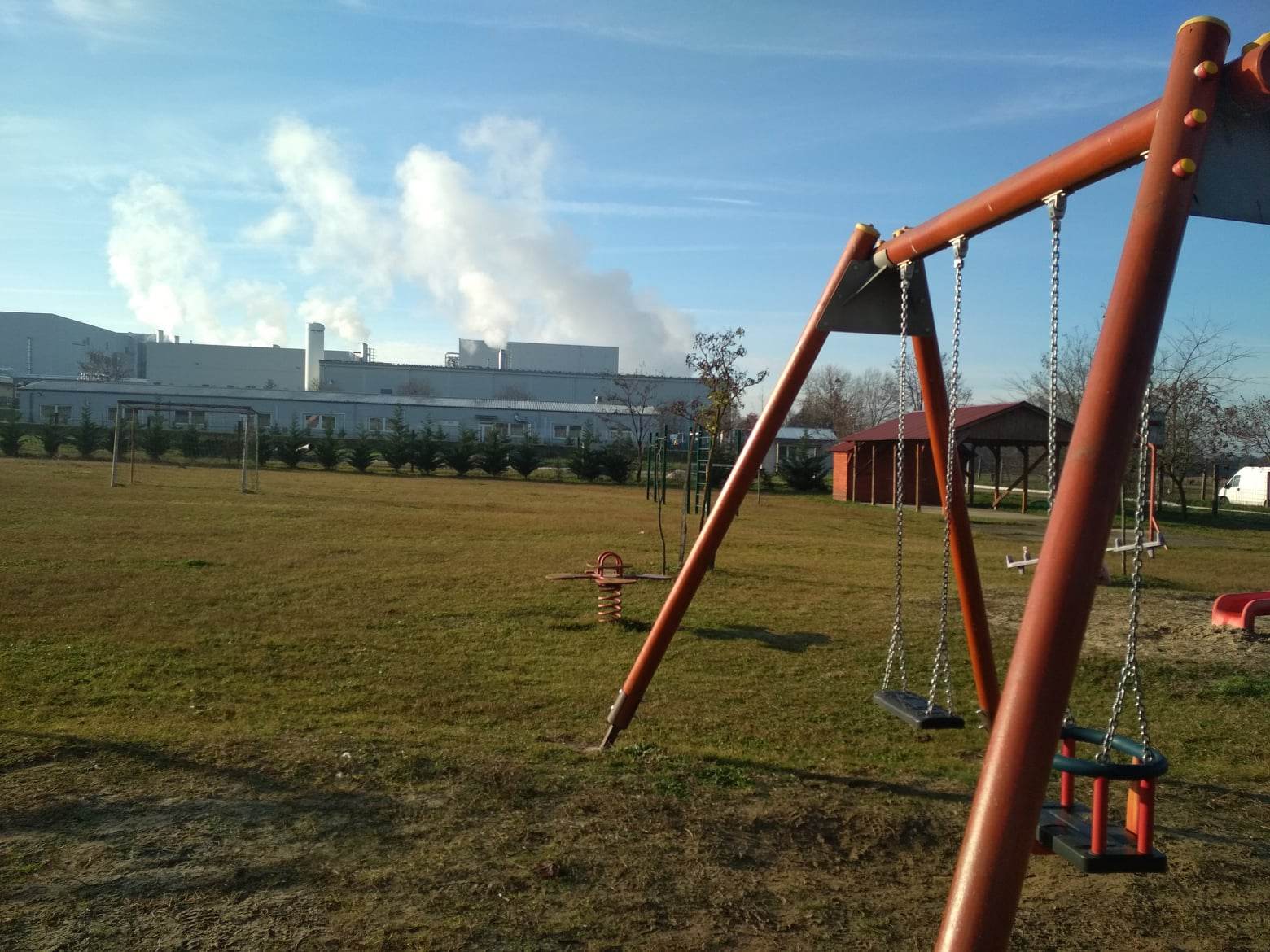The https://english.atlatszo.hu use cookies to track and profile customers such as action tags and pixel tracking on our website to assist our marketing. On our website we use technical, analytical, marketing and preference cookies. These are necessary for our site to work properly and to give us inforamation about how our site is used. See Cookies Policy
Government pumps another 22 billion into the infrastructure development of Samsung’s Göd factory
The costs of developing the industrial zone in Göd have continued to rise. The government is providing nearly HUF 20 billion extra money to power the battery factory, which will cost around HUF 50 billion. The amount for road development due to industrialisation will also be increased: a decree in October will provide an extra HUF 2.8 billion. This means that the total cost has more than doubled, with the battery factory’s utility and road improvements now standing at HUF 92 billion.
The government is not sparing public money when it comes to supporting a battery factory in Göd. We’ve broken down how the cost of infrastructure investment, essential for the plant’s expansion, has risen. Nearly HUF100 billion will be spent on building the necessary electricity, gas, and water supplies to the Göd industrial zone and allowing more trucks to access the expanding battery plant.

Building electricity supply has cost HUF 27 billion in two years
The government decision to increase the cost of electricity supply to the Göd industrial area by nearly HUF 20 billion was published in the Hungarian Gazette on 24 November. This is not the first time, in recent years the government has been very generous in increasing the subsidy for electricity supply:
- They spent HUF 22.5 billion on it in 2020.
- The amount was increased to HUF30.2 billion last December.
- The balance jumped to HUF 49.5 billion in November this year.

The Göd Special Economic Zone (SEZ). In addition to the approximately 120 hectares of the Samsung factory, marked in blue, the map shows the rest of the 420-hectare SEZ in yellow; orange indicates a further 40 hectares of industrial park and dark green indicates the area for protection. The purple colour is the newly designated area for transformer stations to supply electricity (Source: god.hu)
Costs of new roads increased by HUF 2.8 billion
The original government decree on infrastructure improvements in the Göd industrial area earmarked HUF7.16 billion for road construction. For the time being, a new Göd semi-hub and exit for the second factory along the M2 motorway will be built from this sum.
The construction of a road system around the factory to relieve congestion in the residential areas of Göd was also planned, but it seems that the original budget was not enough. The government, therefore, decided in October to allocate an extra HUF 2.8 billion for the road works.
The cost of the infrastructure development of the Samsung mega-factory has more than doubled in the last two years to HUF92 billion.
This includes an extra HUF 20 billion for the construction of a 13-kilometre-long water and wastewater pipeline and a new wastewater treatment plant in Vác, which will be able to handle 11,000 cubic metres of wastewater a day.

Mészáros & Mészáros Kft. is carrying out the construction of the water utility of the Samsung factory, the state is providing HUF 32 billion for this (Photo by the author)
This is how the costs are currently distributed following the amendments to the regulations:
- HUF 49.5 billion for electricity supply,
- 32.2 billion for water utilities,
- 9.9 billion for transport development,
- 415 million for the supply of natural gas;
- 333 million for administrative tasks.
In addition, neither the local nor the county councils hold any public forums or public hearings on the progress of the works and road construction in the industrial area, even though the public should be informed in the case of such large-scale works in residential areas.
Ten things they didn’t tell you about large-scale battery manufacturing in Hungary
We believe that the story of the Göd factory is a vet horse for all the serious problems that characterise the domestic battery industry – and that the government is hiding from the Hungarian people.
1500-2000 trucks a day would have needed an impact assessment
Earlier, Atlatszo reported that the tender for the design of road infrastructure improvements related to the Samsung factory, launched by the government’s national infrastructure development agency NIF Zrt, was declared unsuccessful, citing defence costs and utility cost reduction. This implied that the road system around the factory, which would relieve congestion in the residential areas of Göd, would not be built. However, the decision on the extra 2.8 billion will go ahead, and a new public tender will be launched to design the project, which will be transferred to the Ministry of Construction and Investment.
However, it is still unclear which new roads will be designed. The roads around the industrial area have already been put out to tender, and FLAVUS Engineering Ltd. has won the tender with a bid of HUF 206 million. The Pest County Government Office’s decision gave the green light for the construction of the road network based on FLAVUS’ preliminary plans, which did not require an environmental impact assessment.
The Göd-ÉRT Association of local residents has challenged this very decision in court, arguing that the roads, which have a daily traffic of around 1500-2000 trucks, should have been subject to an environmental impact assessment and the construction of noise protection facilities. The NGOs also complain that, despite five years of noise pollution from the factory, the noise impact of the new roads was not assessed by the legislation and that the combined noise impact of the extremely factory and the new roads was not taken into account. Legal proceedings in this case are still pending.

Morning atmosphere in Göd-Újtelep. The factory was built 15 (!) metres from the nearest residential properties. Emissions of air pollutants are measured once a year, complaints about noise are not investigated by the environmental authority. Photo by the author
We would like to know exactly how the Ministry of Construction and Investment is spending the almost 10 billion allocated for transport improvements, so we have submitted a FOI request to the ministry.
Large sums are allocated to the development of the Göd SEZ
However, the costs of industrialisation in Göd are likely to increase further. The government expects more companies to set up in the 420-hectare Göd Special Economic Zone (SEZ) under the jurisdiction of Pest county and its surroundings.
“The establishment of the Göd Special Economic Zone (SEZ) aims to promote investment, the development of existing businesses, and the establishment of new businesses in the SEZ and its surroundings by improving the conditions for business location,” says the public procurement notice in September this year. The contracting authority for the procurement is the Pest County Municipality, which is the owner of the Göd Special Economic Zone and is entitled to collect and distribute the tax of the companies in the zone among several municipalities.

The new Göd exit of the M2 motorway is about to be opened. Further industrial investments are expected in the 420-hectare special economic zone in Göd (photo by the author)
According to the call for tenders, the feasibility study is also responsible for preparing a concept plan for a further 40-hectare industrial park in Göd, which is to be located in the Göd SEZ. However, the government has already taken care of what can be built on these 40 hectares. A government decree of 2021 not only made the development of the new Göd industrial zone a priority investment but also defined the purpose of the buildings and their precise construction requirements.
So far, the government has provided HUF 1.7 billion for the preparation of the new industrial area, including tree felling, land expropriation and preliminary archaeological work, excavation and tree felling have already started. The government has also provided HUF 1.9 billion for the construction of the Dunakeszi rail loading terminal, which has been rescheduled for 2023 and 2024. The latter will be built outside the administrative boundary of Göd, in the “catchment area” of the SEZ, but it is not known whether there will be an industrial railway line to the Göd industrial area and where exactly it will run.
And all these investments are presumably just the beginning: the development of the special economic zone is expected to consume billions more in public funds.
Translated by Zita Szopkó. The original, Hungarian version of this story was written by Zsuzsa Bodnár and can be found here. Cover photo: Péter Szijjártó shakes hands with Samsung SDI President Choi YoonHo. Source: Péter Szijjártó – Facebook

